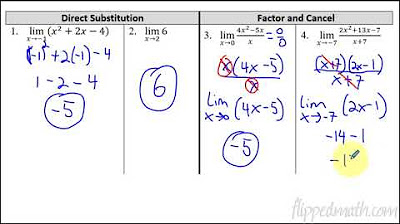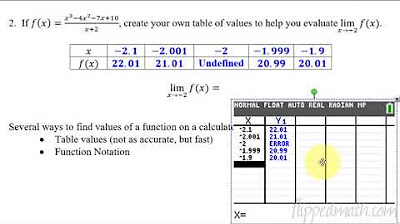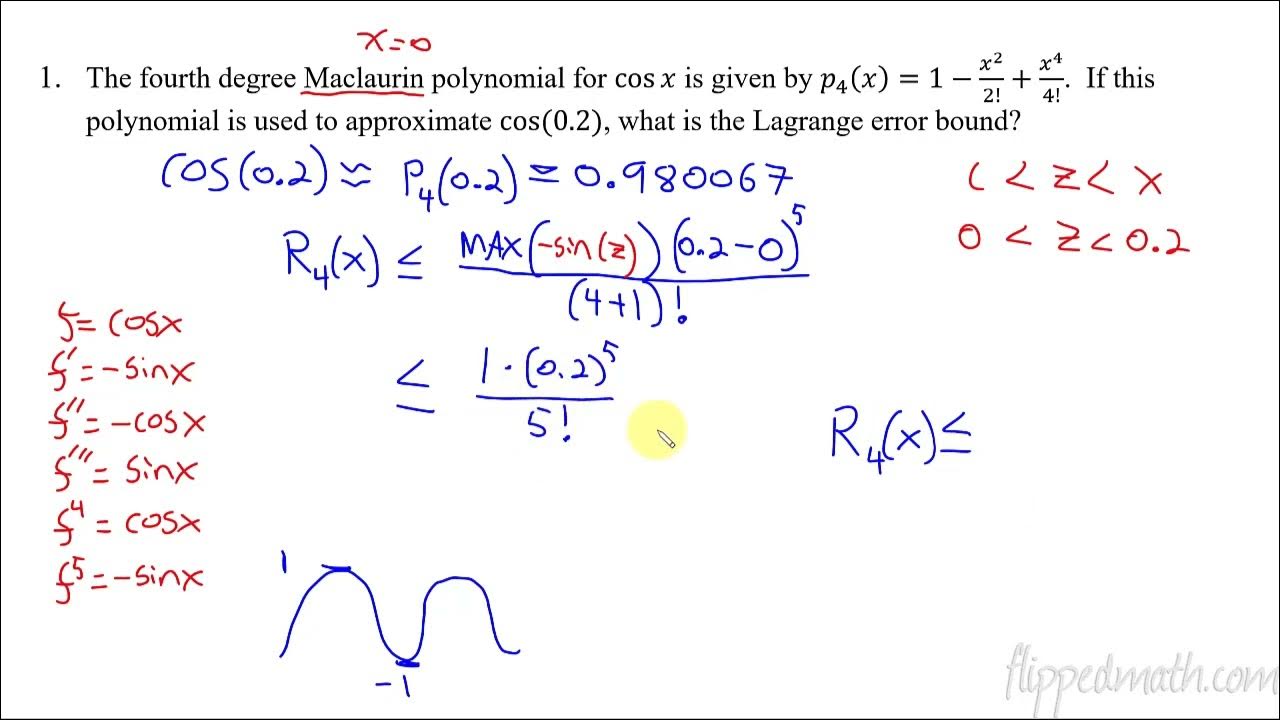Calculus AB/BC – 2.1 Defining Average and Instantaneous Rate of Change at a Point
Summary
TLDRIn this calculus lesson, Mr. Bean introduces Unit 2, delving into the concept of limits and their application. The focus is on understanding the rate of change, transitioning from average rate of change to instantaneous rate of change. The lesson explains the use of a calculator for complex functions, emphasizing the importance of setting it to radians for trigonometric functions. Mr. Bean demonstrates how to calculate the average rate of change using the natural log function and warns against rounding errors. He also explores the concept of secant and tangent lines, leading to the calculation of the instantaneous rate of change at a specific point using limits. The lesson is designed to prepare students for AP exams, highlighting the importance of recognizing functions and identifying points for instantaneous rate of change.
Takeaways
- 📚 The lesson is transitioning from unit one on limits to unit two, emphasizing the use of limits in calculus.
- 🔢 Students are introduced to the use of a calculator, specifically the TI-84, for more complex calculations, with an emphasis on setting the calculator to radians.
- 📉 The concept of rate of change is reviewed, equated to slope, and connected to changes in dependent and independent variables.
- 📌 The average rate of change is calculated using the formula (f(b) - f(a)) / (b - a), demonstrated with the function f(x) = natural log of 3x.
- ✅ A practical demonstration of calculating average rate of change using a calculator is provided, highlighting the importance of function notation and avoiding rounding errors.
- 📐 The lesson differentiates between the average rate of change and the instantaneous rate of change, introducing the secant line and tangent line as visual aids.
- 📉 The secant line's slope is shown to approximate the tangent line's slope as the interval between points decreases, leading to the concept of the limit.
- 🎓 The process of finding the instantaneous rate of change at a specific point is detailed, using the limit as h approaches zero.
- 📘 The lesson concludes with a focus on understanding the difference between the limit as h approaches zero and the limit as x approaches a, which are key for identifying the instantaneous rate of change.
- 🔑 The importance of practicing these calculations is stressed for AP exam preparation, even though shortcuts will be introduced later.
Q & A
What is the main topic of the lesson discussed in the script?
-The main topic of the lesson is the introduction to calculus, specifically focusing on the concept of limits and their application in calculating rates of change, including average and instantaneous rates of change.
Why is it important to use a calculator in radians mode for certain calculations?
-It is important to use a calculator in radians mode when dealing with trigonometric functions such as sine, cosine, or tangent, as these functions require the angle to be in radians for accurate calculations.
What does the script suggest about the use of a TI-84 calculator in the lesson?
-The script suggests that while the TI-84 calculator is used in the lesson, students without this specific calculator should be able to adapt the methods shown to their own calculator models, possibly by looking up how to perform similar functions on their devices.
How is the average rate of change calculated in the script?
-The average rate of change is calculated by finding the difference in the function values at two points (f(b) - f(a)) and dividing it by the difference in the x-values (b - a).
What is the significance of the 'delta' notation mentioned in the script?
-The 'delta' notation (Δ) signifies the change in a variable, such as Δy for the change in y and Δx for the change in x. It is used to express the concept of the rate of change or slope in calculus.
Why is it crucial not to round off numbers prematurely when performing calculations in the script?
-Rounding off numbers prematurely can lead to rounding errors, which significantly affect the accuracy of the final result. It is advised to perform all calculations with full precision and round off only at the very end.
What is the concept of a secant line in the context of the script?
-A secant line in the script refers to the straight line that passes through two points on a curve, representing the average rate of change between those two points.
How does the script explain the transition from a secant line to a tangent line?
-The script explains that as the horizontal distance 'h' between the two points on the curve approaches zero, the secant line gets closer and closer to the curve, eventually becoming the tangent line, which represents the instantaneous rate of change at a specific point.
What is the instantaneous rate of change, as discussed in the script?
-The instantaneous rate of change is the rate of change at a specific point on a curve, represented by the slope of the tangent line at that point. It is found by taking the limit as 'h' approaches zero in the secant line equation.
What is the significance of the 'a' value in the context of finding the instantaneous rate of change?
-The 'a' value represents the specific point on the x-axis at which the instantaneous rate of change is being calculated. It is the x-coordinate of the point where the tangent line's slope is determined.
Outlines

Cette section est réservée aux utilisateurs payants. Améliorez votre compte pour accéder à cette section.
Améliorer maintenantMindmap

Cette section est réservée aux utilisateurs payants. Améliorez votre compte pour accéder à cette section.
Améliorer maintenantKeywords

Cette section est réservée aux utilisateurs payants. Améliorez votre compte pour accéder à cette section.
Améliorer maintenantHighlights

Cette section est réservée aux utilisateurs payants. Améliorez votre compte pour accéder à cette section.
Améliorer maintenantTranscripts

Cette section est réservée aux utilisateurs payants. Améliorez votre compte pour accéder à cette section.
Améliorer maintenantVoir Plus de Vidéos Connexes

Calculus (Version #2) - 1.1 Limits Graphically

AP Precalculus – 2.2 Change in Linear and Exponential Functions

Calculus AB/BC – 1.6 Determining Limits Using Algebraic Manipulation

Calculus AB/BC – 1.4 Estimating Limit Values from Tables

Calculus AB/BC – 1.10 Exploring Types of Discontinuities

Calculus BC – 10.12 Lagrange Error Bound
5.0 / 5 (0 votes)
